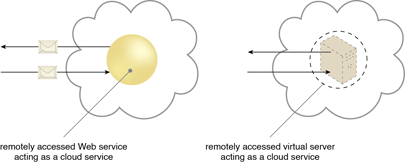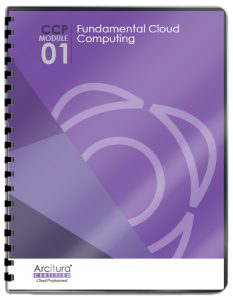Cloud Computing Patterns, Mechanisms > Basics > Basic Concepts and Terminology > Cloud Service
Cloud Service
Although a cloud is a remotely accessible environment, not all IT resources residing within a cloud can be made available for remote access. For example, a database or a physical server deployed within a cloud may only be accessible by other IT resources that are within the same cloud. A software program with a published API may be deployed specifically to enable access by remote clients.
A cloud service is any IT resource that is made remotely accessible via a cloud. Unlike other IT fields that fall under the service technology umbrella – such as service-oriented architecture – the term “service” within the context of cloud computing is especially broad. A cloud service can exist as a simple Web-based software program with a technical interface invoked via the use of a messaging protocol, or as a remote access point for administrative tools or larger environments and other IT resources.
In Figure 1, the yellow circle symbol is used to represent the cloud service as a simple Web-based software program. A different IT resource symbol may be used in the latter case, depending on the nature of the access that is provided by the cloud service.

Figures 1 – A cloud service with a published technical interface is being accessed by a consumer outside of the cloud (left). A cloud service that exists as a virtual server is also being accessed from outside of the cloud’s boundary (right). The cloud service on the left is likely being invoked by a consumer program that was designed to access the cloud service’s published technical interface. The cloud service on the right may be accessed by a human user that has remotely logged on to the virtual server.
The driving motivation behind cloud computing is to provide IT resources as services that encapsulate other IT resources, while offering functions for clients to use and leverage remotely. A multitude of models for generic types of cloud services have emerged, most of which are labeled with the “as-a-service” suffix.
Note
Cloud service usage conditions are typically expressed in a service-level agreement (SLA) that is the human-readable part of a service contract between a cloud provider and cloud consumer that describes QoS features, behaviors, and limitations of a cloud-based service or other provisions.
An SLA provides details of various measurable characteristics related to IT outcomes, such as uptime, security characteristics, and other specific QoS features, including availability, reliability, and performance. Since the implementation of a service is hidden from the cloud consumer, an SLA becomes a critical specification.

